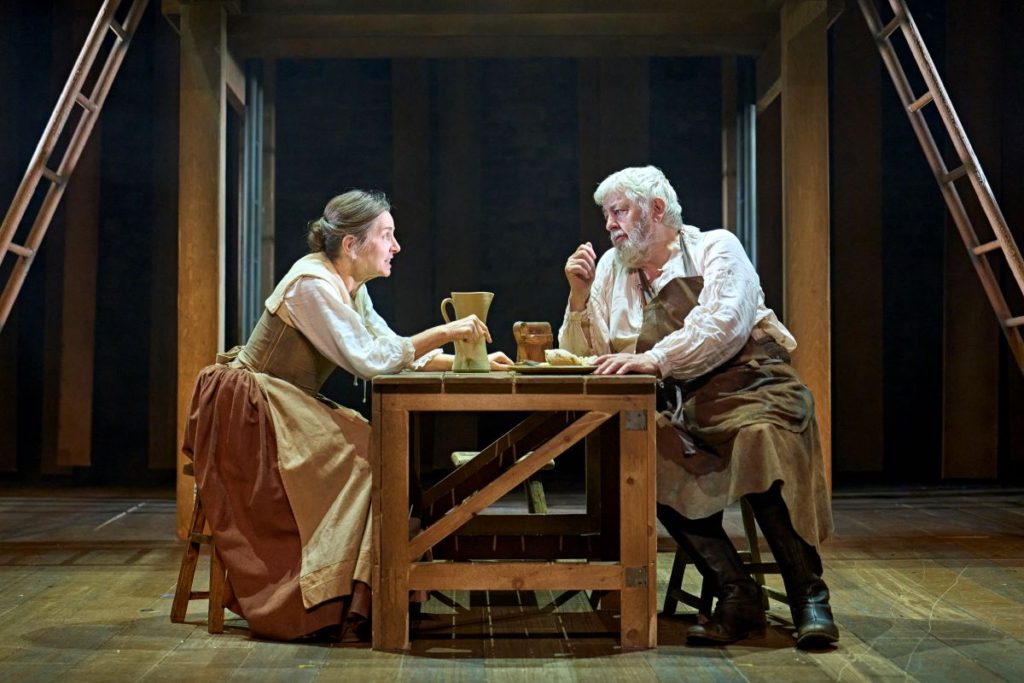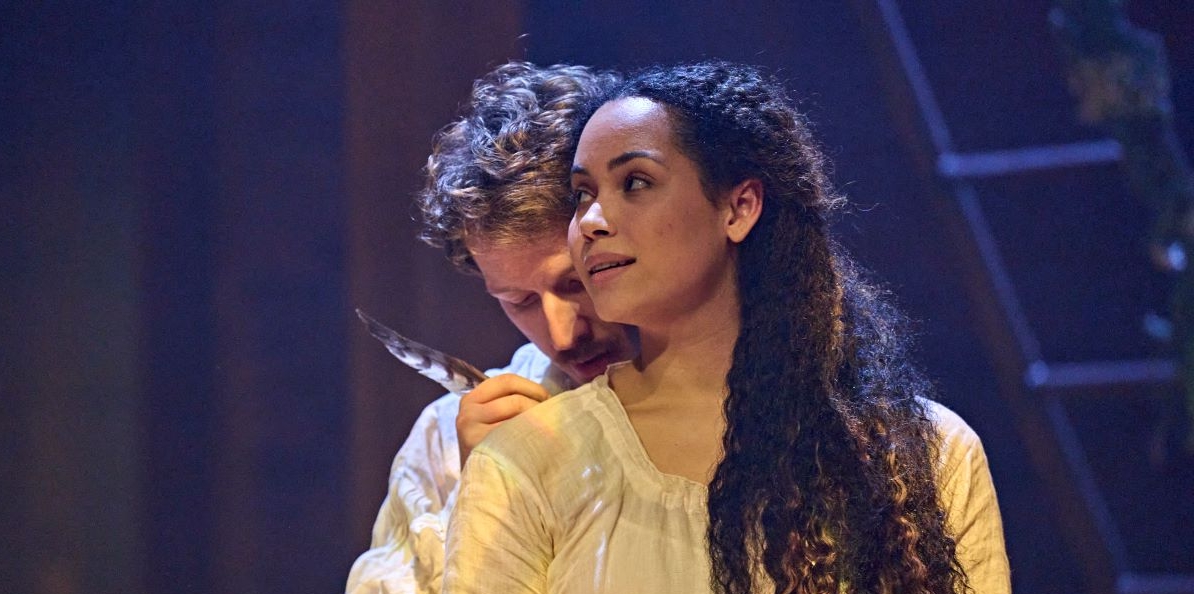In Shakespeare Unbound Professor René Weis noted that in Shakespeare’s Stratford-upon-Avon the names of Hamnet and Hamlet were interchangeable. In this adaptation by Lolita Chakrabarti of Maggie O’Farrell’s novel Hamnet, the focus is not so much on William the playwright or man as on Anne (also known as Agnes) Hathaway, the young woman he wedded when he was 18.
The play opens with apples and seduction. A young, feisty, cheerful, free-spirited young Anne first encounters William, the Latin tutor, who is at that time referred to as a “feckless, tradeless boy.”
The two are attracted to each other and before long she is carrying his child. They wed months before she gives birth to their first child, Susanna. Anne decides to give birth in the woods, where she is surrounded by the spirit of her much missed and loved late mother and nature. The scene depicts something of Anne’s character, a fearless young woman utterly connected to nature and intuitively spiritual. Yet it is bizarre that any woman in any period, then or now, would elect to give birth, and for the first time, under a tree. The second labour scene, the birth of the twins, conveys the anxiety most women experience before and during labour. The birth of the twins – Hamnet and Judith – conjures the pain Anne endures and the joy the couple share. The scenes that follow are of a certain domestic bliss despite William’s repeated absences. Glimpses into William’s plays are short and perfunctory. Some scenes feel a bit like Power Point presentations. After the interval, the domesticity is gradually replaced by a certain dramatic intensity. Judith’s illness and Hamnet’s sudden death at the age of 11 rob the family of the peaceful existence. The focus is on Anne’s grieving. It is as subdued as it is shattering. She travels to London, to see William’s play Hamlet. There in the theatre, Shakespeare’s grief is poignantly unravelled.
The dramatic narrative is driven by Anne and not William. Madeleine Mantock’s Anne is dependable and matriarchal even though she is not the eldest in the household. Tom Varey’s William is rather a shadow of a man. He is described in the programme as ‘William, her husband’. That says it all. His role is dependent on her. Varey’s performance aptly depicts his role.
John Shakespeare, William’s father, a glover, is performed by Will Brown. John’s character is of a crude individual who bullies and browbeats his son. His wife, Lisa Sadovy as Mary, Shakespeare’s mother, beautifully conveys a caring and loving mother and mother-in-law. She can stand up to John.

Sarah Belcher’s Joan, Anne’s / Agnes’s stepmother, convincingly presents a nasty and spiteful stepmother. Bartholomew, Agnes’s brother, has little to say but his presence cannot be ignored. There is a touch of humour in his demeanour. Anne’s and William’s three children – Phoebe Campbell’s Susanna, Alex Jarrett’s Judith, and Ajani Cabeyas’s Hamnet, delight in their performances and add colour to the occasional moments of domestic bliss.
In Erica Whyman’s direction the first act moves rather slowly, and too many scenes are introduced merely to state certain facts. This may be a structural weakness in the actual play where information undermines the natural flow of events.
The wooden set, skilfully designed by Tom Piper, creates a rustic, rural feel to the family location while also conveying a hint of the stage on which Hamlet was first performed.
This production of Hamnet offers an interesting account of Shakespeare’s wife and something of his family as imagined by Maggie O’Farrell and translated to stage by Chakrabarti. The theatre was full.
On the way out one could hear ‘I’ll never see Hamlet the same way again.’

